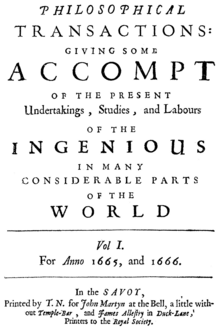Scientific magazine
A scientific journal is a "periodical publication" that attempts to record the progress of science, among other things including reports on new research. Many of the journals are highly specialized, although some of the older ones (such as Nature and Science, for example) publish articles in a wide range of scientific fields, so they are commonly called multidisciplinary journals.
Its importance lies in its role within scientific communication in which: «The scientific journal represents the public record that organizes and systematizes the accumulated knowledge and is an indirect and formal channel of the scientific message, since it is inserted in the midst of a communication process that begins with the information created by (scientific) authors, refined and formalized by editors and reviewers, widely disseminated by information institutions and received by users, either to integrate it and apply it to their practical activity or to generate new knowledge".
Prestige and/or recognized scientific journals are peer-reviewed (arbitration) within the scientific community, in an attempt to ensure maximum quality standards, as well as scientific validity; with this, the scientific journal reaches a high level of reliability. The articles published in each issue represent the latest in research in the field covered by the journal.
There are currently various indexing tools for audited scientific journals such as Clarivate Analytics' Web of Science (WOS) and Elsevier's Scopus, or Google Scholar, which collects information from the Internet, Google Scholar Metrics (GSM).
Unlike generic journals, the entire journal is not usually read, but the articles to be read are chosen, depending on the type of research the scientist is engaged in.
Scientific journals have their editorial policy, establishing the type of access to their files and whether or not they can be self-archived later in institutional repositories. In addition, these journals can specify in their editorial policy the commitments or ethical standards that the authors abide by to avoid plagiarism, guaranteeing that their works are original and unpublished.
Publishing frequency
Not all magazines are published with the same frequency: there are weekly, biweekly, monthly, quarterly, semi-annual or annual. There are also continuous publication journals, in which the articles are published as their review and editing is completed, without waiting to complete a certain number or volume.
Form of publication
From 1975 to 1995, the price of a subscription to scientific journals has shown an average annual increase of 7.3 percent, due to factors as diverse as inflation, the growing amount of information published and, above all, the great reduction in the frequency of subscriptions.[citation required]
- Printed publications
- Online publications
- Early or express
Types of texts included in a scientific journal
There are several types of scientific articles; the exact terminology and definition varies from one journal to another, but the most frequent types are four:
- The Letters or communiqués (not confusing with the "charts to the director") are short descriptions of important research findings. They usually follow a quicker way of publication because they are considered urgent, therefore—and due to the format of the magazines (which generally do not accept less than five pages per article)—have a high technical knowledge and are not easy to understand quickly.
- The revisions (known in English as reviews) are extensive updated synthesis on a particular topic. These are usually requested by the same journal by some outstanding scientist in the area. They usually have a varied extension, from five to fifty pages depending on the magazine. But they are the best place to start understanding a certain particular topic.
- Them articles (known in English as papers) are a complete description of the results of an original research. They usually have between five and twenty pages, but there are important variations depending on the journal and the field of research: in mathematics and theoretical computing are not rare the articles of more than 80 pages.
- The Supplementary materialwhich is not precisely the article per se, but the experimental or graphic information obtained from the original articles, but that — due to space problems or exposure clarity — is decided to leave out of the article. It is common to have articles that do not show the experimental data, but to establish that they can be seen in the supplementary material.
According to the magazine, you can also find, among others:
- Information about scientific events.
- Reviews of articles published in the same journal and their corresponding replicas.
- Review of editorial novelties in the field of discipline in which the publication is registered.
History
The first known scientific journal is the French Le Iournal des sçavans (in modern French, Journal des Savants), from 1665, followed shortly thereafter, the same year, by the British Philosophical Transactions of the Royal Society, which is still in print.
Contenido relacionado
Jose Celestino Mutis
Category:Energy
Ms Fnd in a Lbry

